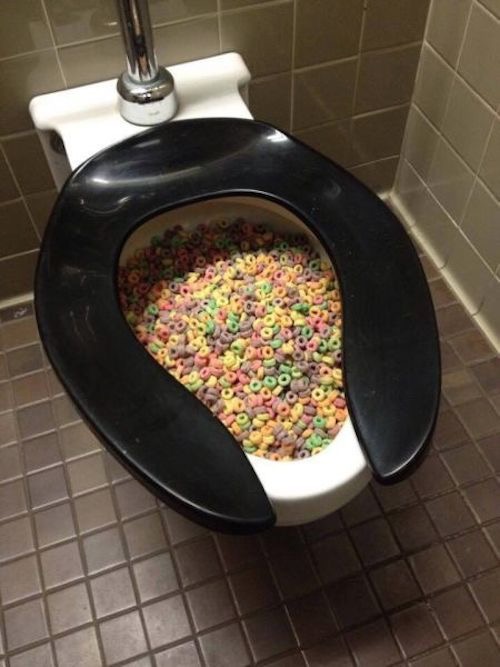Is it Safe to Flush Food in the Toilet?
Is it Safe to Flush Food in the Toilet?
Blog Article
How do you really feel with regards to Think Twice Before Flushing Food Down Your Toilet?

Introduction
Lots of people are usually faced with the dilemma of what to do with food waste, specifically when it concerns leftovers or scraps. One usual inquiry that occurs is whether it's all right to flush food down the commode. In this short article, we'll look into the reasons individuals may think about purging food, the repercussions of doing so, and alternative approaches for correct disposal.
Reasons people may take into consideration flushing food
Absence of awareness
Some individuals may not recognize the potential harm triggered by flushing food down the toilet. They might erroneously believe that it's a harmless practice.
Ease
Flushing food down the bathroom might feel like a quick and simple service to throwing away undesirable scraps, particularly when there's no neighboring trash can available.
Idleness
Sometimes, individuals may simply choose to flush food out of sheer negligence, without considering the repercussions of their activities.
Repercussions of flushing food down the bathroom
Environmental effect
Food waste that winds up in waterways can contribute to air pollution and harm marine communities. Furthermore, the water utilized to purge food can strain water sources.
Plumbing concerns
Flushing food can lead to clogged up pipes and drains, creating expensive plumbing repairs and troubles.
Types of food that should not be flushed
Fibrous foods
Foods with coarse structures such as celery or corn husks can obtain tangled in pipelines and trigger blockages.
Starchy foods
Starchy foods like pasta and rice can absorb water and swell, leading to obstructions in pipes.
Oils and fats
Greasy foods like bacon or cooking oils should never ever be purged down the commode as they can strengthen and create blockages.
Proper disposal techniques for food waste
Making use of a garbage disposal
For homes geared up with waste disposal unit, food scraps can be ground up and flushed with the plumbing system. Nevertheless, not all foods appropriate for disposal in this fashion.
Recycling
Certain food product packaging materials can be recycled, minimizing waste and decreasing environmental impact.
Composting
Composting is an environmentally friendly means to dispose of food waste. Organic materials can be composted and made use of to improve soil for horticulture.
The relevance of appropriate waste monitoring
Reducing environmental injury
Appropriate waste monitoring techniques, such as composting and recycling, aid minimize pollution and protect natural resources for future generations.
Shielding plumbing systems
By avoiding the method of flushing food down the bathroom, home owners can stop costly pipes repair work and preserve the honesty of their pipes systems.
Final thought
To conclude, while it might be tempting to purge food down the bathroom for benefit, it is necessary to understand the potential consequences of this action. By adopting appropriate waste monitoring practices and taking care of food waste responsibly, people can contribute to much healthier pipes systems and a cleaner environment for all.
FLUSH FOOD DOWN THE TOILET?
FLUSHING FOOD CAN CAUSE BLOCKED DRAINS IN YOUR HOME
All of the plumbing fixtures in your home are connected to the same sewer pipe outside of your home. This outdoor sewer pipe is responsible for transporting all the wastewater from your home to the Council sewer mains. Even small pieces of food that go down the kitchen sink can cause problems for your sewer. It should therefore be obvious that flushing larger bits of food, such as meat, risks a clog in either the toilet itself or the sewer pipes. Flushing greasy food is even more problematic because oil coagulates when it cools, coating the interior lining of your pipes.
THE TOILET IS NOT A BIN
Food isn’t the only thing that people shouldn’t be flushing down the toilet. People use the toilet to dispose of all kinds of things such as tampons, makeup wipes, dental floss, kitty litter and even underwear. Water goes to great lengths to educate residents about the high costs and stress placed on wastewater treatment systems simply from people flushing the wrong stuff down the toilet. It costs taxpayers millions of dollars each year, and homeowners thousands in blocked drain repairs.
FLUSHING FOOD IS A WASTE OF WATER
Flushing food is a waste of our most precious resource - water. In June this year Level 1 water restrictions were introduced to protect water supply from drought conditions. Much of New South Wales continues to be affected by prolonged drought with recent figures revealing up to 97 per cent of the state remains in drought. Depending on whether you have a single or dual flush toilet, every single flush uses between five and 11 litres of water. In the current climate this is a huge amount of water to be wasting on flushing food that should be placed in the bin (or better yet, the compost).
https://www.jabplumbingsolutions.com.au/blog/can-you-flush-food-down-the-toilet

As a devoted person who reads on Think Twice Before Flushing Food Down Your Toilet, I figured sharing that excerpt was a good thing. Sharing is nice. You won't know, you may very well be doing someone a favor. We thank you for your readership.
Call Today Report this page